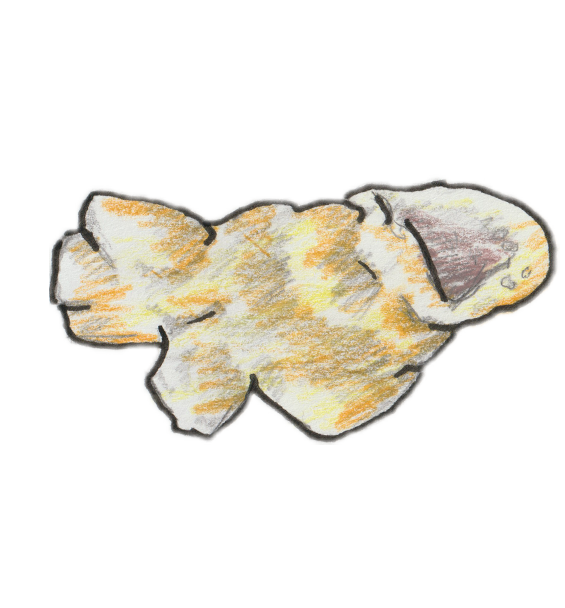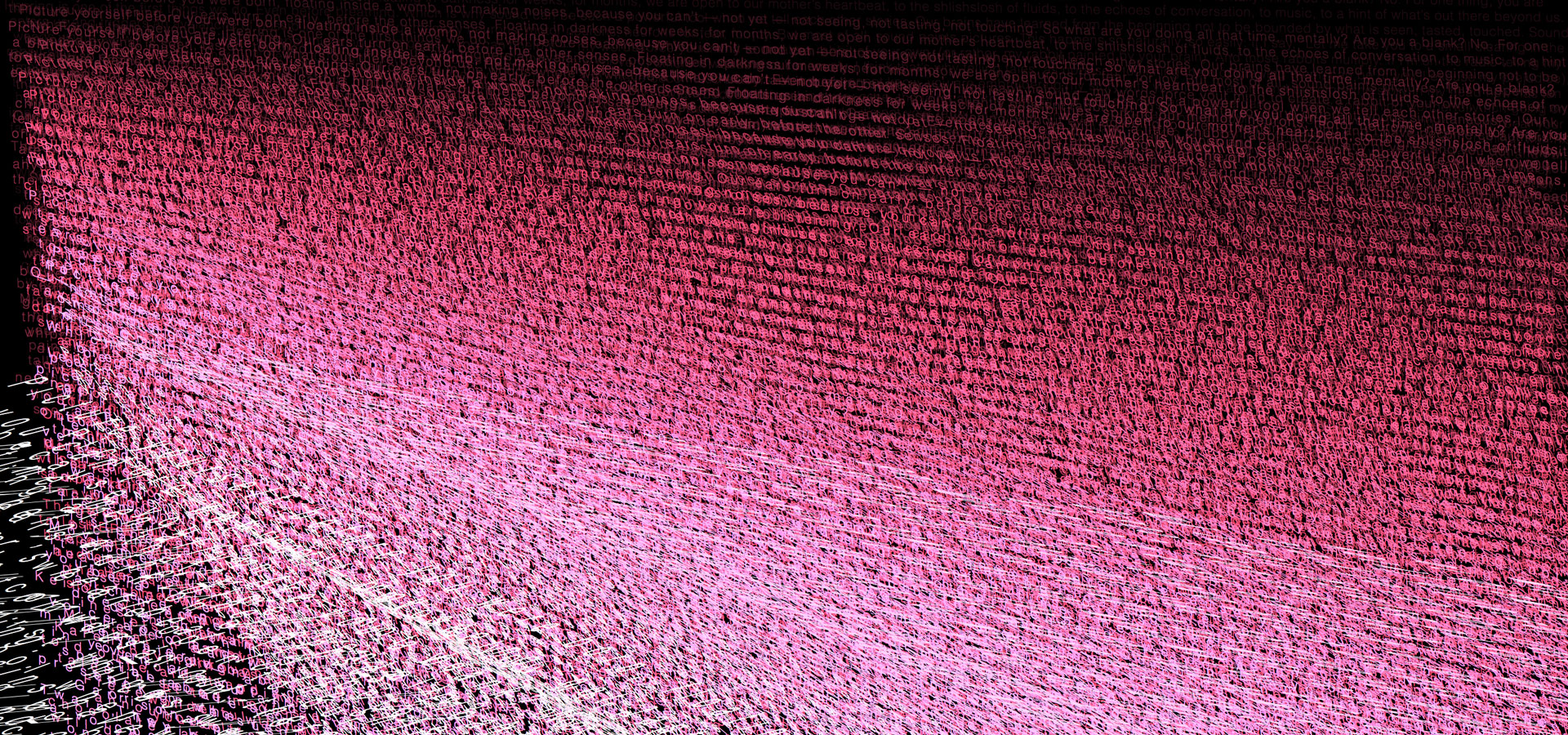Issue 5: Reality?
Consider Your Ears


Consider Your Ears
By Robert Krulwich
Illustrated by Carrie Wang
All the new realities in development–virtual, augmented, mixed–focus on our visual sense. But when it comes to a truly immersive experience, the ears have it!
Picture yourself before you were born, floating inside a womb, not making noises, because you can’t — not yet — not seeing, not tasting, not touching. So what are you doing all that time, mentally? Are you a blank?
No. For one thing, you are listening. Our ears turn on early, before the other senses. Floating in darkness for weeks, for months, we are open to our mother’s heartbeat, to the shlishslosh of fluids, to the echoes of conversation, to music, to a hint of what’s out there beyond us. Hearing is one of the first things we do. Even before breathing. Which is why sound can be such a powerful tool when we tell each other stories.
Our brains have learned from the beginning not to be bounded by what is seen, tasted, touched. Sound enters us and triggers an avalanche of possibilities, spiking our memory neurons, motor neurons, neurons for fear, for joy.
But most of all, sound paints pictures. This happens so naturally, so easily: if I say, “Let me take you to a small clearing in the woods where we will find a little, chubby rabbit nuzzling some grass,” you can’t help it — my words force your mind to create a rabbit of your own, (or rather, my rabbit painted by your brain). And those rabbits multiply. If I’m on the radio telling my rabbit story to 10,000 listeners, there will be 10,000 slightly different rabbits in 10,000 slightly (or very) different woods simultaneously.
I think that’s why telling tales, as opposed to filming them or drawing them, can be (if you’ll excuse my prejudice), more personal.
Once you start listening, without ever agreeing to or even wanting to, you and I have become co-authors. In ways I cannot know, you are embroidering my story with your imagination, and therefore the story in my head now has ten thousand different variants, one for every radio listener, and I don’t know any of yours and you don’t know anybody else’s, yet in every case, the teller and the listener are now dancing an intimate dance. There’s something wonderfully rich going on here.
TV is different. Movies are different. There, the makers of the tale dictate what you see. When Disney puts a rabbit in the woods, it’s not your rabbit, it’s theirs, and yes, it can be a lovely rabbit, but it won’t have you styling it. It won’t bear your imprint. And that, I think, is why radio can sometimes make better pictures than the movies. Of course, films can have an edge — what Meryl Streep does with her face and body no radio artist can do; what Federico Fellini does with framing, with his faces, radio can’t do.
Writers, I admit, get very, very close. What’s on a page has voice too, and when I’m reading anything — a poem, a story, even a news item, pictures tumble automatically into my head, driven by words, and even if you and I are reading the same passage, what I’m seeing in my head and you in yours are not the same. There are tens of millions of Huck Finns and Harry Potters hiding in our heads. What’s special about stories spoken versus stories written is that in their books, Mark Twain and J.K. Rowling are less present.
On the radio or in a podcast, the narrator is a “me,” a particular person whom you recognize. People know Garrison Keilor. They know Terry Gross. They hear a distinct, particular somebody. When you are reading Mark Twain, Twain is between the lines, hiding in the prose. Podcasts are more person to person.
Sometimes listening to a voice feels deeply authentic (like Michelle Obama telling her own story). Sometimes who’s talking can shift how one hears. (What would it be like to hear Anna Karenina read by a woman and then a man? Would it be the same book? Something would change. Again, that’s because a story told out loud is going to be, at least in part, about the person voicing it. Voice is personal.)
Here’s another thing about telling tales in sound: sound can go fantastic with stunning efficiency. I remember an ad created in the 1960s by comedy writer Stan Freberg, who was hired by commercial radio stations to tout radio’s selling power. He did it with one example:
“I am,” he announced, “about to roll a 700-foot mountain of whipped cream into Lake Michigan, already drained and filled with hot chocolate, after which a squadron of Royal Canadian Air Force jets will zoom in towing a ten-ton maraschino cherry, which they will drop from the sky while 25,000 specially hired extras scream with delight” — all of which he then did, immediately, cueing the cream, the jets, the cherry, producing a 20-second Hollywood movie that sounded weirdly real. If you don’t believe me, listen for yourself HERE.
Now try that in a movie theater. Oh, for a few gazillion dollars you could maybe pull off a literal, plausible facsimile, but it could never be as privately convincing as the Lake Michigan whipped cream I painted in my head, because I painted it. That’s the key. When a creative act is shared, when the artist and audience are in cahoots, the experience gains personal power.
In the end — and this is where audio stands tallest — what you do at the movies or the museum or the theater is your gaze. The artists create something for you to see, and if they do it well, all kinds of wonderful things happen to your head and heart, but when the story comes through your ears, you can close those gazing eyes, step inside yourself, and you are totally free to imagine — and if I do my job right, and you close your eyes tight, you and I, dancing our very private dance, can do anything, anything together.
Robert Krulwich is co-host of Radiolab, which explores the mysteries of science and life through visceral storytelling. The double Peabody Award–winning show can be heard on more than 500 public radio stations, and its podcasts are downloaded over five million times each month. The National Academies of Sciences, Engineering, and Medicine awarded Radiolab its top honor for excellence in communicating science to the general public.
